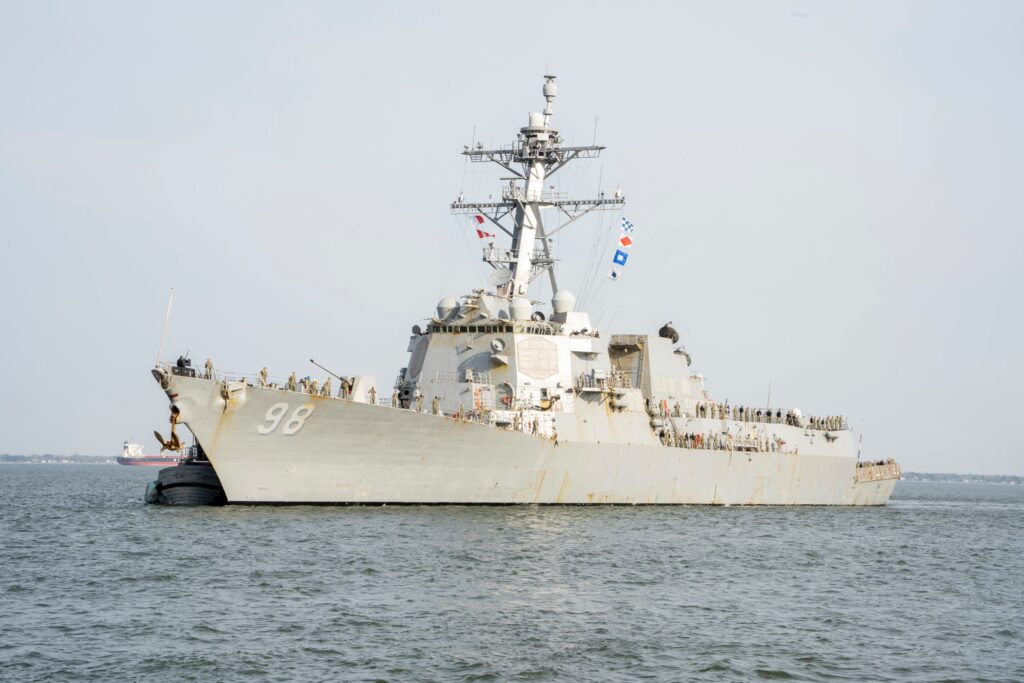
NAVAL STATION NORFOLK — The Arleigh Burke-class guided-missile destroyer USS Forrest Sherman (DDG 98) returned home to Naval Station Norfolk on April 13 following a surge deployment, the U.S. 2nd Fleet said.
Forrest Sherman operated with NATO Allies and partners in the Eastern Atlantic, North Sea and Baltic Sea over the past three months.
The crew conducted over 200 hours of flight operations, 11 drills with NATO Allies and partners, six strait transits and six replenishments-at-sea. The drills required close coordination of maneuvering operations, cross-deck flight operations, and flashing light and flag-hoist drills with navies from Denmark, France, Germany, Italy, The Netherlands, Poland and Sweden.
During the deployment, Forrest Sherman completed port visits to Stockholm, Sweden, and Gdansk, Poland, strengthening the U.S. commitment to security in the region. While in port Stockholm, the crew hosted Ambassador Erik Ramanathan, the U.S. ambassador to Sweden; Rear Adm. Ewa Skoog Haslum, chief of the Swedish navy and commander maritime component command; and several Swedish flag officers. In port Gdansk, members of the crew volunteered in a community relations event where they assisted in the packing, loading, sorting and distribution of donations to Ukrainian refugees in the Gdansk region.
“The Forrest Sherman crew displayed their relentless fighting spirit during this deployment,” said Cmdr. Greg Page, commanding officer of the ship. “Their dedication to executing the mission is evident in their hard work. They are deeply committed to each other and this ship, which was evident when they were tasked to prepare for this deployment under a condensed certification timeline. The crew was excited to showcase our ship’s capabilities while operating with NATO Allies and European partners in theater.”
U.S. 2nd Fleet, re-established in 2018 in response to the changing global security environment, develops and employs maritime forces ready to fight across multiple domains in the Atlantic and Arctic in order to ensure access, deter aggression and defend U.S., allied and partner interests.



